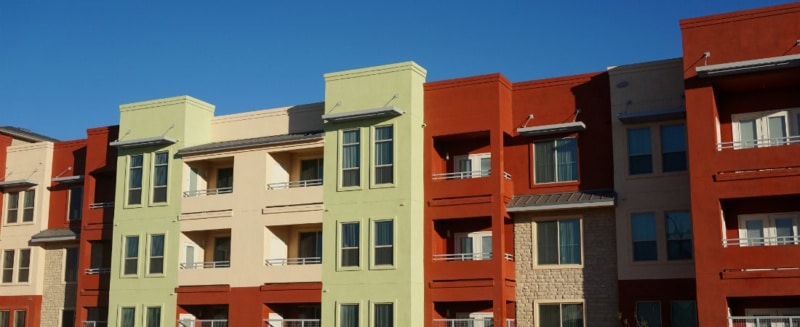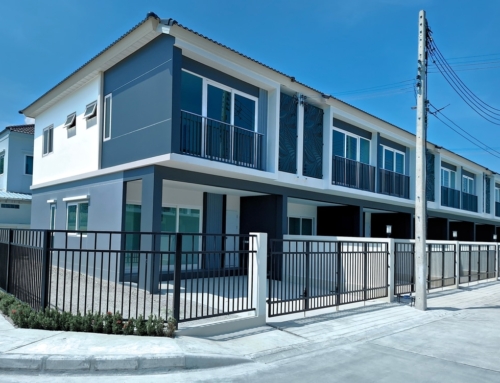Reserve funds for condos: what are the requirements? Mortgage lenders pay closer attention to reserve funds for condos as requirements have increased.
Q: In trying to sell a condominium, the buyer was denied a loan due to the fact the condo/management association did not transfer 10 percent into the reserve fund. What are the requirements for reserves and do we have any recourse against the management company for failing to fund the reserve fund properly?
Reserve Funds for Condos | What Are the Requirements?
A: One of the results of the Great Recession and housing crisis is that secondary mortgage market leaders Fannie Mae and Freddie Mac, which are both under government conservatorship, have increased certain requirements relating to condominium associations. The requirements are designed to make sure loans have a lower associated risk of foreclosure.
In the boom years, developers would throw up condo buildings left and right, and lenders were loaning money to almost anyone with a decent-enough credit score and a pulse. But the interest rates were relatively high. When the Great Recession began back in 2007 and millions of Americans lost their homes, there were suddenly too many condos available for the number of condo buyers. Prices tanked, leaving many condos underwater. As condo owners lost their jobs and were unable to refinance, many condos were abandoned and went into foreclosure.
As condo owners defaulted on their loans and stopped paying their condominium assessments, condominium developments didn’t have enough money set aside in reserves for the proverbial rainy day. Lenders that did foreclose had to make payments to the condo buildings and to cities for property taxes. Fannie Mae and Freddie Mac had to kick in billions of dollars to make up the difference.
Resulting Minimum Requirements for Condo Reserves
The result was that lending guidelines now require condominium associations to have a minimum amount of money deposited into the annual reserves and the general is 10 percent of the annual budget goes into reserves. While it sounds nice to make sure that condominium associations are accumulating a cushion for capital expenditures or for other expenses, the fact that a condo building hasn’t accumulated the requisite amount shouldn’t necessarily preclude a borrower from purchasing property there.
In some cases, depending on the amount a borrower wants to get from the lender for the purchase, the lender can waive the condominium requirements. The more money a borrower wants to borrow, the greater risk the lender takes and the stricter the lender will be on the guidelines. A borrower who intends to borrow 95 percent of the purchase price will have a harder time obtaining a loan than a borrower only looking for 50 percent of the purchase price.
While many larger condominium associations might have already transferred 10 percent of their budget into reserves, not all of them have and not all of them will. Some condominium associations are still struggling with foreclosures and short sales and may not have the ability to get more money from their owners.
How to Work with the Management Company
If you live in this condominium association, you can work with the management company to see if it can increase the property’s budget and show enough excess cash from the owners to transfer the required 10 percent or more into the condominium reserves.
But you can’t blame the management company if the board of the association does not pass a budget that requires higher assessments and the contribution to reserves. You can fault the management company if it hasn’t informed the association that lending guidelines now might require this contribution. The management company can only follow the budget that the board of directors of the association passes and approves. The management company would not and should not arbitrarily decide where the homeowner’s money should go.
You need to keep in mind that the condominium association and the management company might want stronger, more qualified buyers coming to the property. If the annual reserves contribution isn’t made, that alone will naturally limit the number of potential buyers able to purchase in the condominium development. The result might be better-qualified buyers but the pool of buyers able to buy in the development may be smaller.
(And if there are fewer buyers able to purchase property at the development, prices will rise more slowly, not at all, or may even fall.)
You can get more information on the requirements that Fannie Mae has for condominiums here. You will see that not only do they require a 10 percent payment to reserves, but they have other requirement relating to the maximum number of homeowners that may be late in their assessments at any time in developments (15 percent if there are 30+ units) and the number of units that must be owner-occupied (51 percent).
More on Topics Related to Reserve Funds for Condos
What Are the Responsibilities of a Condo Association?
What You Need to Know About Being a Condo Owner
Can Condo Associations Ban Cannabis Smoking in Units?
Is a Condo or Townhouse a Better Investment?
What Can You Do About a Nightmare Condo Owner?
(Un)Common Plumbing Problems in Your Condo







we have an old reserve in a condo -playground – we eliminated the playground so we want to move the reserve to another reserve account…. are there any rules or can we just make a motion to do so because the money stays in reserves… thanks
Does a condo of 8 units have to have a reserve fund?
We have a condo of 56 units. We have a reserve fund Marked for separate items like elevator, roof , parking lot painting, etc. If we didn’t have enough money to replace the elevator can we use some of the money from the roof reserve?
You should reference your condo’s by laws to see what are the common elements of the condominium. A reserve study is another tool that can be viewed to highlight the community’s common elements. It is recommended to be updated every 3 years to keep track of replacements, additions, subtractions, and even inflation. The elevator, roof and parking lot are all common elements that listed in your reserve schedules. They all pull from the same pool of money, Capital Reserve Balance. Money is subtracted from this balance based on the useful life of listed common elements. So if your roof has a useful life of 25 years and your elevator has a useful life of 60 years you will pay for the roof before paying for the elevator however the reserve study should show money being set aside for both elements yearly. The balance will almost never be fully funded to account for every common element replacement in one year. It is based on the useful life of the components which varies. The goal is to have the money available for when common elements need replacing.
Maurice, these are excellent suggestions. Thanks for putting in your two cents!
Ilyce Glink, Publisher
ThinkGlink.com
Is there such a thing as a fully funded reserve so no additional funding is necessary?
Brad,
Yes. Homeowners Association can be fully-funded. Until something big happens and it requires a special assessment to cover it and still maintain reserves. The problem is that owners rarely want to pay enough to fully fund a big bank account, so there’s always owner pushback on the amount of assessments. Also, high assessments can make it difficult to sell units in the association. Kind of a Catch-22.
Hope this helps. Thanks for your comment.
Ilyce Glink, Publisher
ThinkGlink.com
Where can I find documentation that shows that a Homeowners Association can be fully-funded?
My condo association has 24.3% our our annual budget in separate accounts, one a capital account and another a “reserve”. That would seem to me to be considered “fully funded” but a lender wants a budget showing we’re adding 10% annually to these funds. (We’re assessing our owners an additional 3.9% annually.)
Do you know of any sources that a lender can refer to?
Thanks.
Marcia,
It isn’t generally an outside resource that Lenders are going to for guidance. They’ll look at budgets and at how much owners are being assessed. You should be able to get that from your building manager or the board of directors.
It may be that your buyers will have to try another lender (or, if you’re doing a home equity loan, you might have to find another lender) if that 10% is actually a requirement.
Thanks for the question.
Ilyce Glink, Publisher
ThinkGlink.com
If a condo association has to enact a large special assessment for roof fund ($4000 per owner) since the condo association has not planned ahead of time, can the condo association just ask for that special assessment to be paid over 2-3 months or does the condo association have to give owners adequate time to come up with such amount of money (like 2 years)?
What companies do reserve fund studies for condo in Ontario?
Gord,
Not sure I understand your question. What kind of study are you looking for?
Ilyce
Our condo board received approval from a majority of the 40 unit owners for our painting project which included EXTENSIVE WOOD ROT repairs. We are just learning that the loan is also being used for:
1. To put $50,000 back into the reserve.
2. To rebuild a portion of a 3 rail fence.
3. To replace one unit’s roof and rebuild their chimney.
Is this legal?
Probably. The board has discretion to rebuild funds and to do the work that’s necessary to keep the property in good stead. Replacing a roof and rebuilding a chimney may be important and necessary. If this is a common element, and lack of action presents a risk, then it’s important to get it done.
The reserve funding is interesting because I don’t know if I agree with borrowing money at today’s high interest rates to build that up – on the other hand, how do you feel about a special assessment?